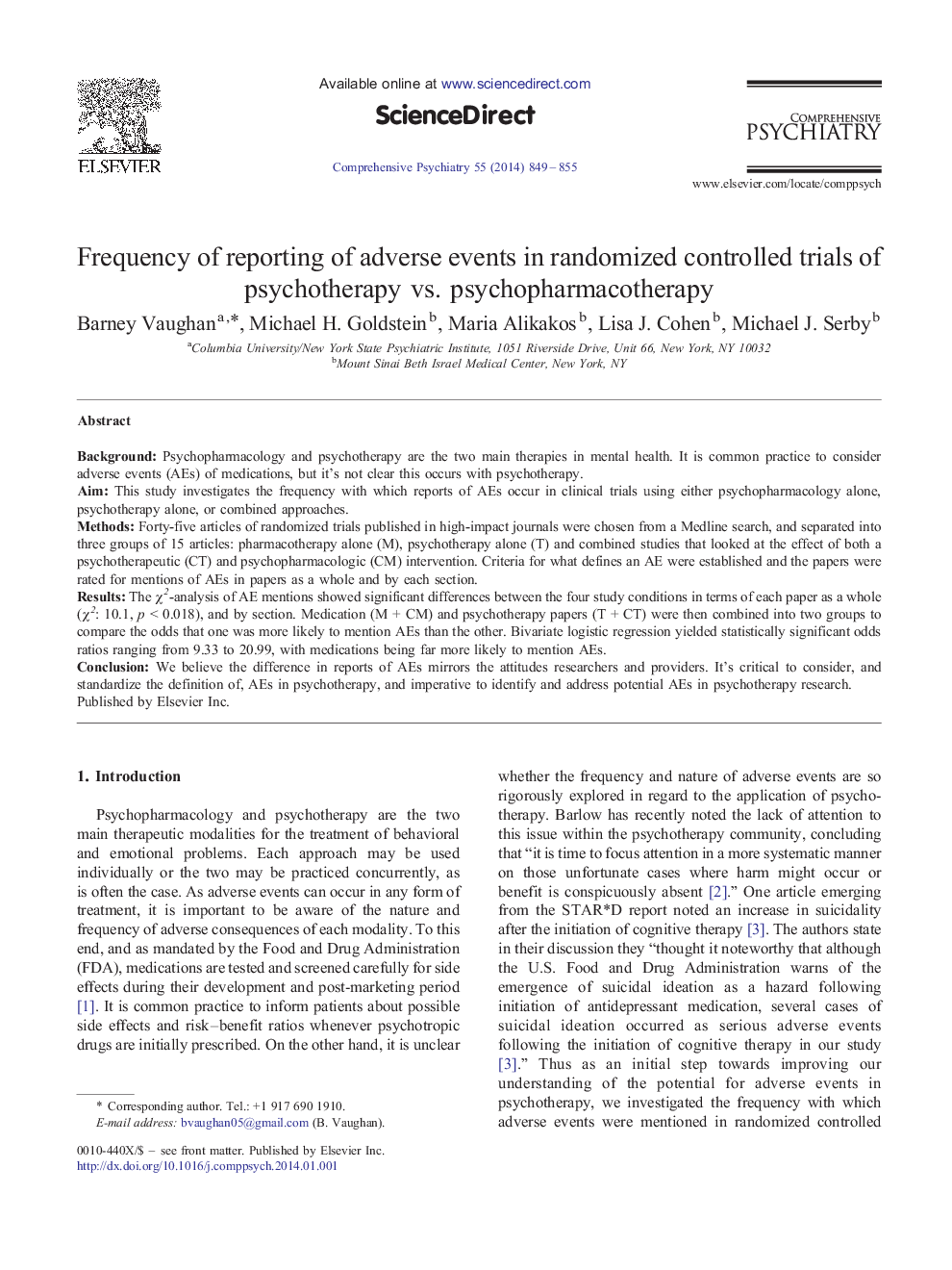| Article ID | Journal | Published Year | Pages | File Type |
|---|---|---|---|---|
| 317424 | Comprehensive Psychiatry | 2014 | 7 Pages |
BackgroundPsychopharmacology and psychotherapy are the two main therapies in mental health. It is common practice to consider adverse events (AEs) of medications, but it’s not clear this occurs with psychotherapy.AimThis study investigates the frequency with which reports of AEs occur in clinical trials using either psychopharmacology alone, psychotherapy alone, or combined approaches.MethodsForty-five articles of randomized trials published in high-impact journals were chosen from a Medline search, and separated into three groups of 15 articles: pharmacotherapy alone (M), psychotherapy alone (T) and combined studies that looked at the effect of both a psychotherapeutic (CT) and psychopharmacologic (CM) intervention. Criteria for what defines an AE were established and the papers were rated for mentions of AEs in papers as a whole and by each section.ResultsThe χ2-analysis of AE mentions showed significant differences between the four study conditions in terms of each paper as a whole (χ2: 10.1, p < 0.018), and by section. Medication (M + CM) and psychotherapy papers (T + CT) were then combined into two groups to compare the odds that one was more likely to mention AEs than the other. Bivariate logistic regression yielded statistically significant odds ratios ranging from 9.33 to 20.99, with medications being far more likely to mention AEs.ConclusionWe believe the difference in reports of AEs mirrors the attitudes researchers and providers. It’s critical to consider, and standardize the definition of, AEs in psychotherapy, and imperative to identify and address potential AEs in psychotherapy research.
